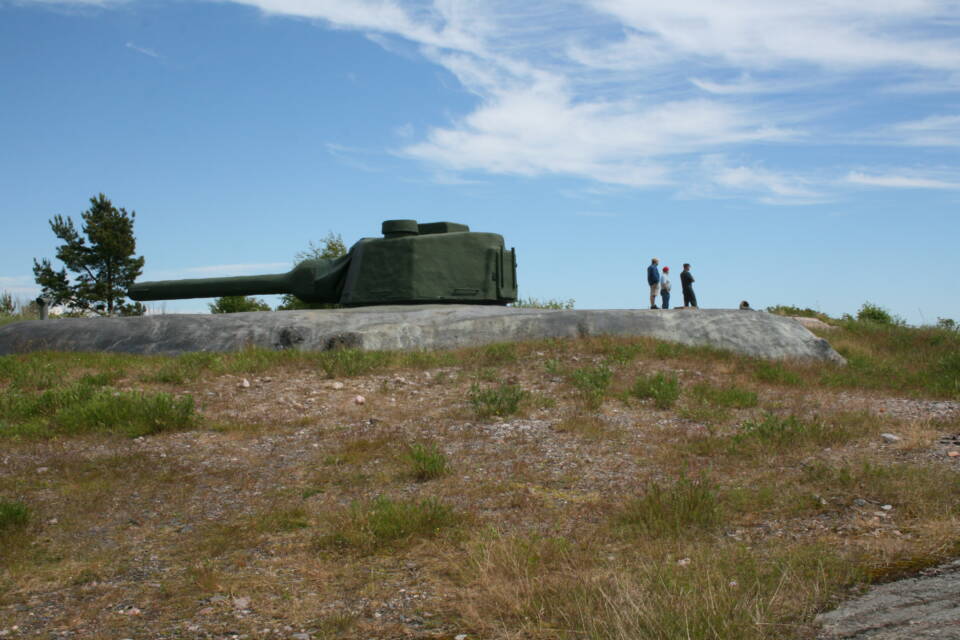
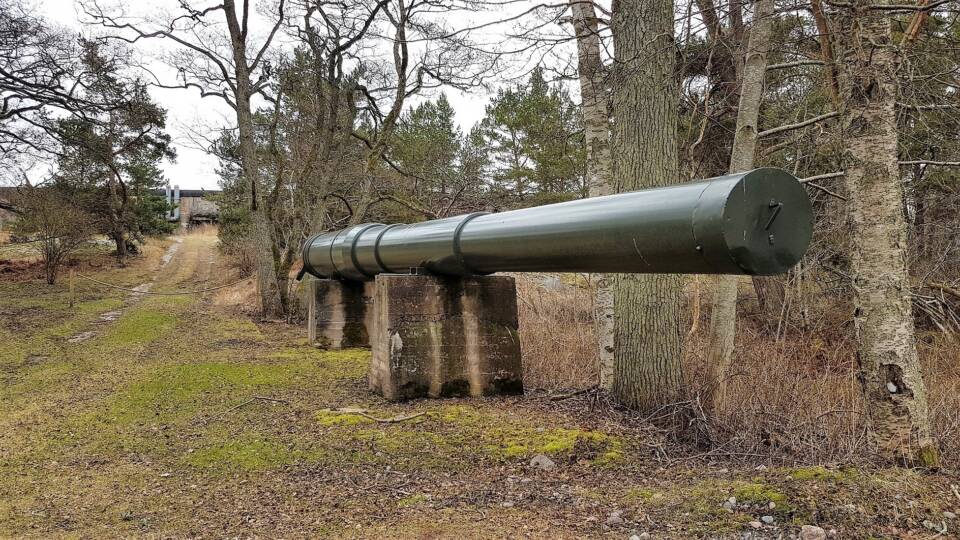
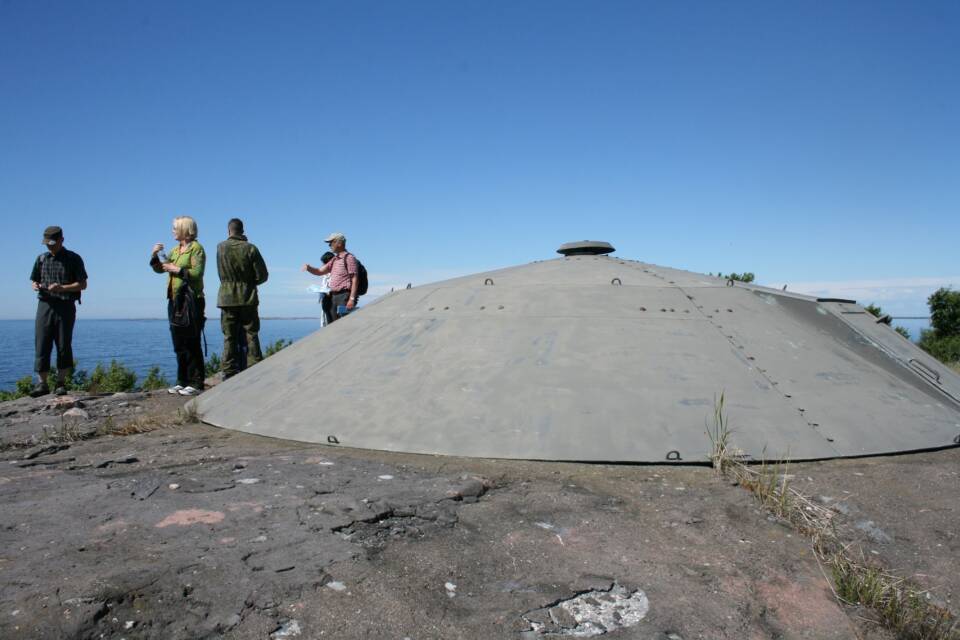

Örö Island is located in the outer archipelago of Kemiönsaari Island, more than 10 km from the marina at Kasnäs. The island was peaceful before the fortress was built, consisting of open moorland which provided pasture for the livestock of the nearby villages. No-one lived permanently on the island and even the shepherds left the island at dusk. The was due to a rumour circulating among the locals that the Swedish soldiers buried on the island during the Finnish War (1808-1809) still haunted it.
In the early 20th century, the island of Örö underwent a major change when Russia forcibly seized it from the villagers of nearby Rosala Island and began to build the fort. This fortress was to become part of a system of maritime forts built by Tsar Peter the Great of Russia. Extending from the Gulf of Finland, they formed a defensive chain whose function was to protect St. Petersburg, the former capital city.
Before the actual fortress could be constructed, a comprehensive road network had to be built on the undeveloped island. In total, about six kilometres of paved cobblestone roads were built. The road connecting the southern and northern tips of the island is called the “Long Boredom” (Fin. Pitkä ikävä), which is crossed in the central part of the island by the “Short Boredom”. These road names are remnants from the garrison times when men had to march from one end of the island and back many times.

Construction work on the fortress began in 1915. Hundreds of people are known to have been killed on the island under miserable conditions. The fortress was built mainly by forced labour from eastern countries and by Finnish prisoners transferred from the Helsinki Penitentiary. The living conditions or exact numbers of prisoners remain unknown because the building sites were kept secret and there was strong press censorship. Many of the prisoners found their final resting place in the earth of Örö Island.
The functions of the fort were structured along the road network. Three cannon stations were built, forming the three barrack areas of the island. Each area had its own small village, consisting of houses for accommodation and outbuildings.

After Finland’s independence, Örö Fortress was transferred to the Finnish Armed Forces. It was used as a training and guard fort, and its armaments and building stock were renewed. Although the fort was never involved in actual military operations, the island was bombed during the Continuation War in 1941. In the same year, the Örö guns also participated as support artillery in the famous Battle of Bengtskär, where an overwhelming force of Russian troops tried in vain to conquer a smaller number of Finns defending the Bengtskär Lighthouse.
After the wars, Örö Fortress served as a military training facility and guard fortress. However, military training was discontinued in 2006, after which an unmanned guard fort operated there for years.
In 2014, the entire island was transferred to Metsähallitus. The following year, the island which had been closed to the public for a century was annexed to the Archipelago Sea National Park and opened to the public. However, for security reasons parts of the island are still closed to the public. A special feature of the Örö Fortress are the heavy 12-inch Obukhov artillery cannons remaining on the island. Such guns are now rare worldwide. The cannon barrel weighs approximately 50,000 kilograms, while projectiles can weigh up to 500 kilograms.



After remaining closed for such a long time, the island’s nature has remained uniquely diverse. The island is criss-crossed by trails and paths through unspoiled forests, dry meadows, and moors, as well as sandy and rocky beaches. The island is diverse in nature and has many species of plants and butterflies that are rare elsewhere in Finland. For example, Örö Island is particularly known for its Common Pasque- (Pulsatilla vulgaris) and Small Pasque (P. pratensis) flowers, which do not grow anywhere else in Finland.
Read more about Örö in Natureparks.fi!(siirryt toiseen palveluun)
Although there are several wrecks near the island of Öro, the most famous of these is the minelayer Ladoga. Originally called the Minin, the vessel was built in Saint Petersburg in 1878 as a Russian naval battleship, measuring as much as 98 metres in length with a combination of steam and sail. Many changes were made to the ship’s structure throughout its history. For example, in 1900, it was converted into an artillery training ship. On further conversion into a minelayer in 1908 it was renamed Ladoga.
When the Ladoga operated in the Archipelago Sea, one of its bases was located on the island of Örö. One day in 1915, Ladoga was returning from a mine-laying voyage when it hit a mine submerged by a German submarine, near Örö Island. Although an attempt was made to tow the ship to the shore, the vessel was sinking too quickly. Instead, it was decided to tow it farther from the shore to avoid blocking the shipping lanes. The Lagoda sank to a depth of about 40 metres off the southwestern tip of Örö. Five men who had jumped overboard when the mine exploded were drowned in the accident.
The wreck was allowed to rest undisturbed for a few years. The first dives on the wreck were made in the 1920s. However, the divers stayed down at the bottom too long and ascended too quickly. As a result, they died of a then unknown disease called decompression sickness, also known as the bends. As a result, the wreck gained a reputation for being cursed.
The wreck of the Ladoga was allowed to remain in peace until the 1970s, until scuba diving became more common. The wreck was relocated, and many artifacts were recovered for the War Museum. Thereafter, it became a popular dive site and its condition suffered due to careless anchoring and diving practices. As a result, diving to the wreck was prohibited. Today, the War Museum issues a limited number of diving permits to divers wishing to visit the Ladoga.

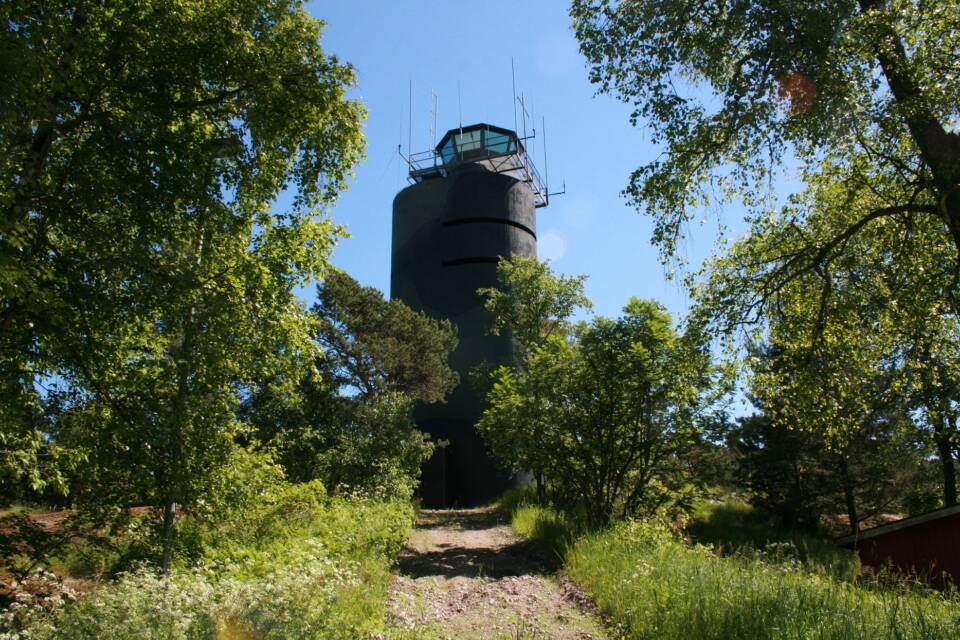
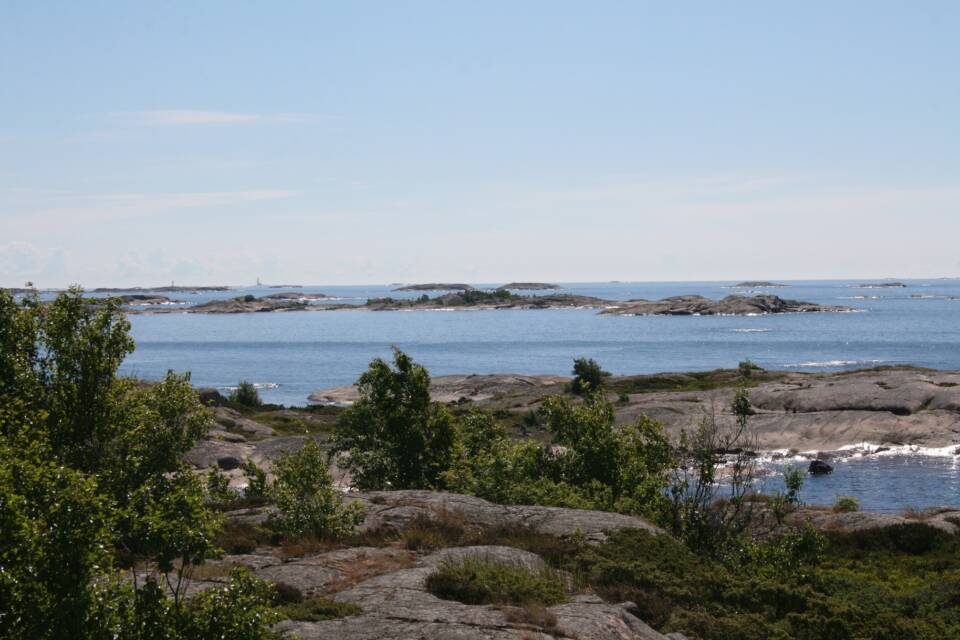
Örö Fort was built in the 1910s as part of the extensive and diverse naval fortress system built by Peter the Great. The building stock of the fort and the nature of the island have been preserved as a complete historical entity, which is why the National Board of Antiquities has defined Örö Fortress Island as a nationally important constructed cultural environment.
Learn more about the protection of this fortress island in the Finnish Heritage Agency’s webpage!(siirryt toiseen palveluun) (in finnish)
Since it is full of military-related historical remains, the island is also a protected fixed ancient monument. Örö Island belongs to the Archipelago Sea National Park.
Explore the ancient remains of Örö fortress island in cultural heritage service window!(siirryt toiseen palveluun)
The island of Örö is easily accessible from Kasnäs Marina by ferry boat, boat taxi or by chartered boat. The journey takes about half an hour.
Check out the timetables in Natureparks.fi- page!(siirryt toiseen palveluun)
N: 6639603, E: 237831(siirryt toiseen palveluun) (ETRS-TM35FIN)